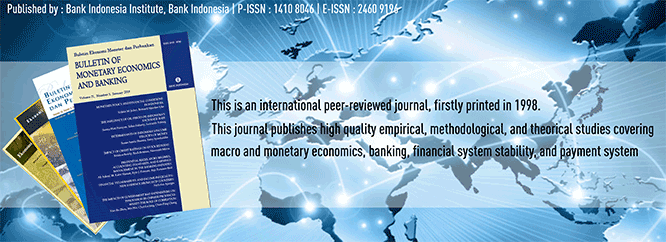
Document Type
Article
Abstract
This study attempts to quantify the influence of monetary policy on aggregate demand in India during the economic reform period (1998-2019). The New Keynesian approach is adopted as the framework for the study. The structural vector auto regression model used in the study revealed that a shock in the monetary policy leaves its outcome in the macroeconomic variables, viz., output and inflation in inverse order. A shock in policy rate leaves its initial transmission effect on output after two quarters and subsequently influences the price level. The effects of monetary aggregate are confined to the price level. Monetary policy shocks are transmitted to output through asset channel, while credit and exchange channel are found neutral.
Recommended Citation
Kumar, Prem
(2023)
"Monetary Policy And Aggregate Demand In India: An Analysis Of Post-Reform Period,"
Bulletin of Monetary Economics and Banking: Vol. 26:
No.
4, Article 7.
DOI: https://doi.org/10.59091/2460-9196.1643
Available at:
https://bulletin.bmeb-bi.org/bmeb/vol26/iss4/7
First Page
659
Last Page
692
Creative Commons License

This work is licensed under a Creative Commons Attribution-NonCommercial 4.0 International License
Country
India
Affiliation
Central University of Rajasthan, Ajmer and Institute of Development Studies Jaipur







